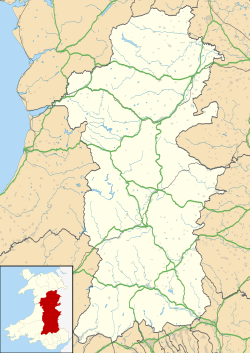This article needs additional citations for verification .(September 2023) |
Abbeycwmhir
| |
|---|---|
Location within Powys | |
| Population | 235 [1] |
| OS grid reference | SO055711 |
| Principal area | |
| Preserved county | |
| Country | Wales |
| Sovereign state | United Kingdom |
| Post town | LLANDRINDOD WELLS |
| Postcode district | LD1 |
| Post town | RHAYADER |
| Postcode district | LD6 |
| Dialling code | 01597 |
| Police | Dyfed-Powys |
| Fire | Mid and West Wales |
| Ambulance | Welsh |
| UK Parliament | |
| Senedd Cymru – Welsh Parliament | |
Abbeycwmhir or Abbey Cwmhir (Welsh : Abaty Cwm Hir, "Abbey in the Long Valley") is a village and community in the valley of the Nant Clywedog in Powys, Wales. The community includes the hamlet of Bwlch-y-sarnau. It was historically in Radnorshire.



